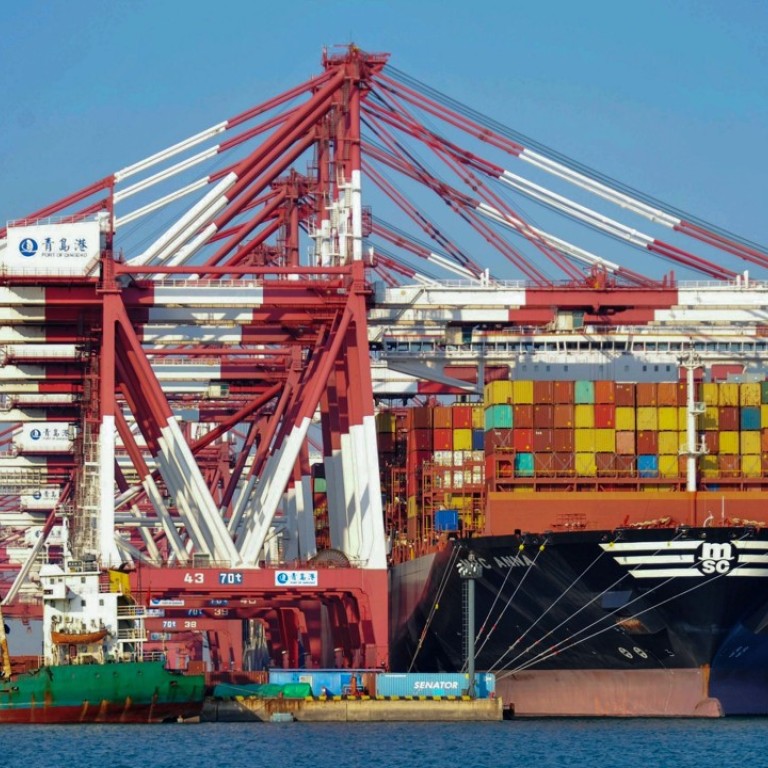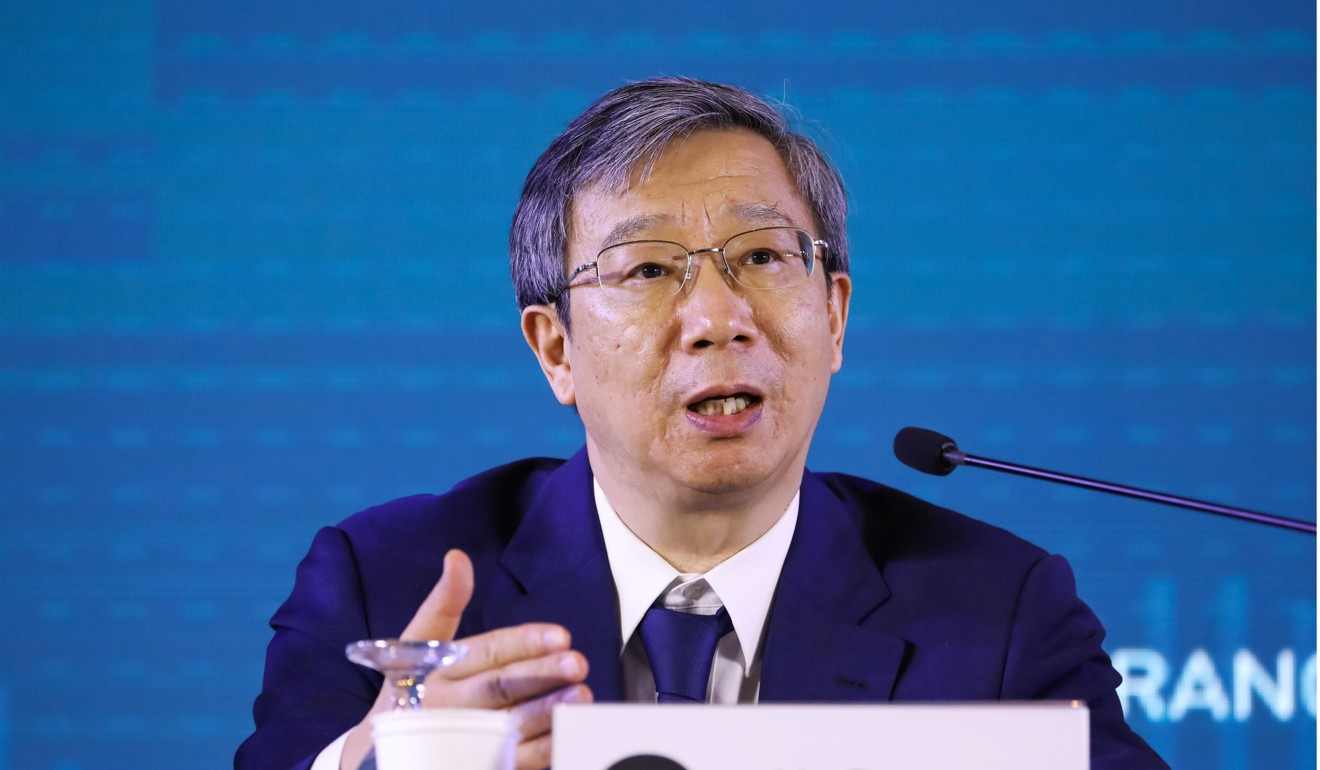
China’s central bank chief hints at further monetary easing amid trade war
Beijing has no shortage of policy tools to ensure economic growth remains on track, PBOC governor Yi Gang says
China still has “plenty of options” when it comes to maintaining economic growth and dealing with external uncertainties, its central bank governor said on Sunday.
Speaking on the sidelines of the annual meetings of the International Monetary Fund and World Bank on the Indonesian island of Bali, Yi Gang, head of the People’s Bank of China (PBOC), was upbeat despite acknowledging the challenges created by the trade war with the United States.
“We still have plenty of monetary policy instruments, in terms of interest rate policy, in terms of RRR [required reserve ratio],” he said.
“We have plenty of room for adjustment, if we need it.”

Despite the PBOC announcing on October 7 that it would cut the RRR – the amount lenders must hold in reserve at the central bank – by one percentage point from Monday to free up about US$110 billion, Yi’s comments suggest Beijing might be ready to relax its monetary policy still further to keep economic growth on track.
China central bank chief meets Mnuchin amid trade tensions, stock plunge
Such commitment to printing money, however, pointed to a further divergence in the monetary policies of the world’s two biggest economies – Washington is equally dedicated to raising interest rates – and could put even more pressure on the value of the yuan.
But China’s priority was growth, Yi said, not engineering a strong currency. And while the risks caused by the trade war were “significant” and there was “tremendous uncertainty” with regards to maintaining growth, Beijing continued to seek a “constructive solution” to its dispute with Washington, he said.
Although China’s gross domestic product grow 6.7 per cent in the second quarter, Beijing adopted a more relaxed monetary stance in July as it braced itself for the impact of the trade war. And while the full effect of the tariffs imposed by the two sides have yet to be seen, the country’s trade surplus with the US actually grew to a record high in September.
Yi said in a recent interview with Chinese business magazine Caixin that the government remained confident of achieving its economic growth target of “around 6.5 per cent” for this year and had succeeded in preventing overall debt levels from rising too quickly.
In contrast, the IMF said the trade war could wipe out 1.6 per cent of China’s output over two years, and as a result revised down its growth forecast for 2019 by 0.2 percentage points to 6.2 per cent.
Is China about to let the yuan weaken below seven to the dollar?
A week after the PBOC announced it would cut the required reserve ratio – for the fourth time this year – to fund infrastructure construction and support the real economy, Yi acknowledged Beijing’s monetary policy stance was clearly different to Washington’s.
“China and the United States are indeed divergent on monetary policy,” he said. “Compared to the US, which has raised [interest] rates eight times and has a road map for further increases, the Chinese economy faces slowing pressure.”
Under those circumstances, China’s interest rate level was “appropriate”, he said.
During the World Bank meeting in Bali, Yi – who is a close aide to Chinese Vice-Premier Liu He, who oversees trade negotiations with the US – held meetings with US Treasury Secretary Steven Mnuchin and Federal Reserve Chairman Jerome Powell.
Mnuchin said on Saturday that he had been told by Chinese delegates that Beijing had no intention of engaging in competitive devaluation during the trade war.
“They emphasised to me that it is not in their interest to see the [yuan] continue to depreciate,” he told reporters.
China’s central bank to pump US$110 billion into economy as US trade war intensifies
While the PBOC has traditionally sought to keep the yuan’s exchange rate stable against the US dollar, in Bali on Sunday Yi took a more pragmatic view.
“We must accept the consequences and subsequent changes, including the impact on the exchange rate,” he said.
“Fortunately, we have seen a stable yuan performance so far this year … [but] we are prepared for the worst.”
And while lots of people were readying for a prolonged trade war, China he said, was “sincere” in seeking a “constructive solution [to the dispute], not only for us, but also our neighbours in the supply chain and for the world”.
China ‘must recapture reformist mood’ to safeguard its economic miracle
Meanwhile, Beijing would continue its programme of economic restructuring and opening up its markets in the fight against protectionism and for a rule-based multinational trading system, Yi said.
“We will actively push forward financial sector opening up, deepen market-oriented reforms of the exchange rate regime and keep the basic stability of the yuan at a reasonable level,” he was quoted as saying in a statement published on the PBOC’s website.
According to a report released last week by the Chinese Academy of Social Sciences, a government think tank, China’s growth could slip to 6.5 per cent in the final quarter of 2018 due to a “complex external environment”, while 6.3 per cent growth next year could be achieved only if the “necessary policy support” was introduced.
The National Bureau of Statistics is due to release China’s third-quarter GDP growth figures on Monday.
Additional reporting by Reuters and Bloomberg

